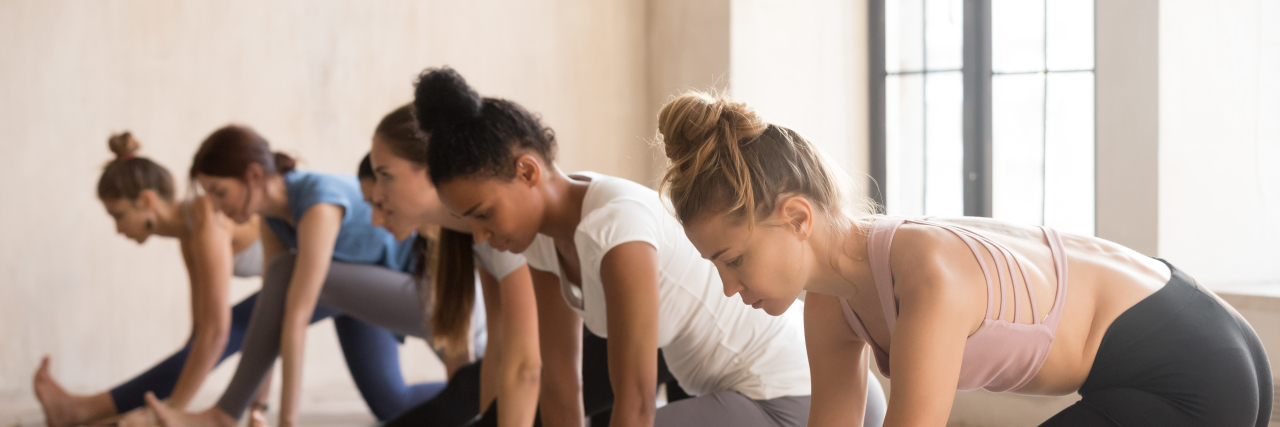As someone who has had significant physical and mental disabilities since I was little, I am used to dividing up my life into two parts: what I can and cannot do. This is nowhere more true than in the realm of exercise and physical activity. I am so used to hearing doctors, physical therapists, and exercise class leaders say “You can’t do that” or “You should not do that.”
I ignored one of my orthopedic surgeons to try yoga — thinking if it was so good and healthy for so many people that maybe it would help me. Not only did everyone I know tell me how great yoga was for their condition, but I did research in India and saw people taking yoga classes all around me. However, my doctor was right. No matter how much I limited what I did and tried not to stress my body badly, I still ended up almost fracturing my back and had to quit yoga. Forever.
I also tried going to a number of physical therapists, thinking a medical professional could help me come up with a whole litany of exercises. However, that did not happen. One memorable physical therapist told me that I should basically just do planks. That was enough to disillusion me about physical therapy for a few years. I did planks on my own and called it a day.
After starting acupuncture, the acupuncturist recommended Pilates. She said it had helped some of her clients with physical conditions like mine. I nodded and inwardly shrugged a bit, thinking, “why would Pilates be different?” However, that was enough to plant the seed and a year later when I was feeling physically and mentally healthier and stronger, I started googling Pilates. I decided to send a query to a local Pilates studio explaining my physical condition.
I didn’t expect much, honestly. But the email I got back was overwhelmingly positive and encouraging. It was the first time someone was excited about everything I could do. So I went in to try it out purely because of the positivity. When I got to the studio, I saw a bunch of complicated-looking machines that intimidated me to no end. My heart sunk a bit. I planned to go back to the elliptical and planks — basically what I’d figured out I could do without hurting myself.
I started to talk with my instructor to explain my complicated physical condition. She nodded, asked questions, and then to my great surprise, said, “Great. Let’s get started.” I looked at her and asked if there would be much I could do. It was her turn to be surprised. She said, “Of course! There are tons of things you can do, and we can modify things to fit you when we need to.”
After working with her, I learned she had her own experiences with limiting physical conditions and injuries, which is how she found Pilates. So did many of her clients and the other instructors. And she was right, I have been able to do so much.
In hindsight, it sounds obvious. I needed to have a positive and encouraging environment to feel confident and capable of working out. Pilates is great, especially for someone like me, but what makes the biggest difference to me is that everyone I work with is positive and encouraging. In the rare instances that something doesn’t feel right and I need to stop an exercise, the instructor adapts and suggests a different way to exercise the same muscles.
In fact, my instructors often tell me that I’m not the only one who has trouble with a particular movement or exercise. Often, when I express frustration with my limitations, they tell me I’m pretty normal. I don’t hear that my body is normal very often. In fact, I’ve had doctors tell me they cannot help me because they have never seen anything like my disability.
Being told I’m just like everyone else and that what I have trouble with is just difficult for everyone is incredibly reassuring to me. I don’t feel broken and limited; I feel like a regular person who is trying to stretch themselves outside of their comfort zone. That kind of mental shift has made this the longest exercise program I have stuck with (outside of planks and the elliptical!) and for that, I am very grateful.
Getty image by Fizkes.

